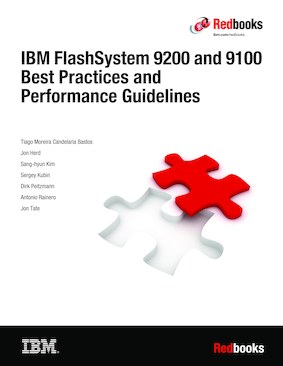Abstract
This IBM® Redbooks® publication captures several of the preferred practices and describes the performance gains that can be achieved by implementing the IBM FlashSystem® 9100. These practices are based on field experience.
This book highlights configuration guidelines and preferred practices for the storage area network (SAN) topology, clustered system, back-end storage, storage pools and managed disks, volumes, remote copy services, and hosts.
It explains how you can optimize disk performance with the IBM System Storage® Easy Tier® function. It also provides preferred practices for monitoring, maintaining, and troubleshooting.
This book is intended for experienced storage, SAN, IBM FlashSystem, SAN Volume Controller and Storwize® administrators and technicians. Understanding his book requires advanced knowledge of these environments.
Important, IBM FlashSystem 9200: On 11th February 2020 IBM announced the arrival of the IBM FlashSystem 9200 to the family. This book was written specifically for IBM FlashSystem 9100, however most of the general principles will apply to the IBM FlashSystem 9200.
If you are in any doubt as to their applicability to the FlashSystem 9200 then you should work with your local IBM representative.
This book will be updated to include FlashSystem 9200 in due course.
Table of Contents
Chapter 1. IBM FlashSystem 9100 introduction
Chapter 2. Storage Area Network
Chapter 3. Drives and arrays
Chapter 4. Storage Pools
Chapter 5. Volumes
Chapter 6. Copy services
Chapter 7. Hosts
Chapter 8. Monitoring
Chapter 9. Maintenance
Chapter 10. Troubleshooting and diagnostics
Appendix A. Business Continuity
